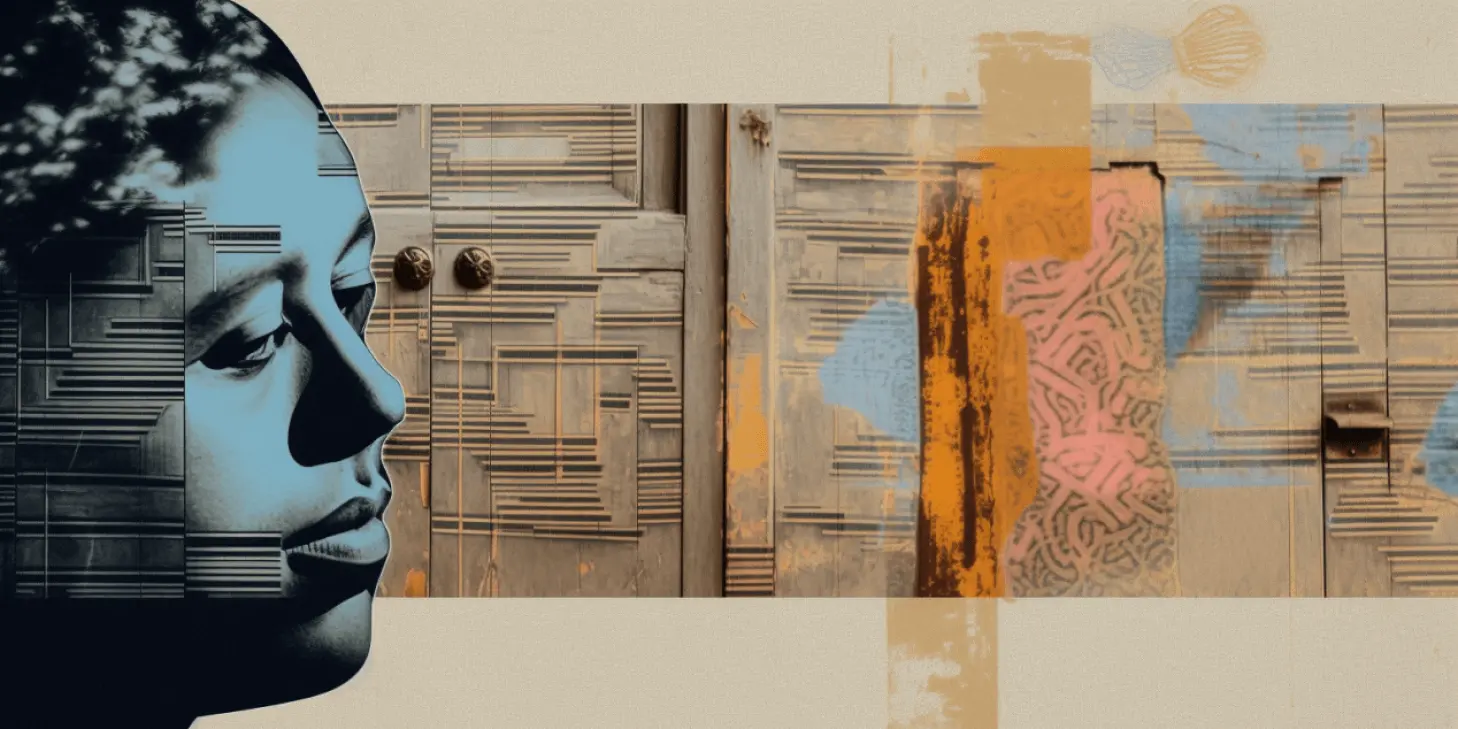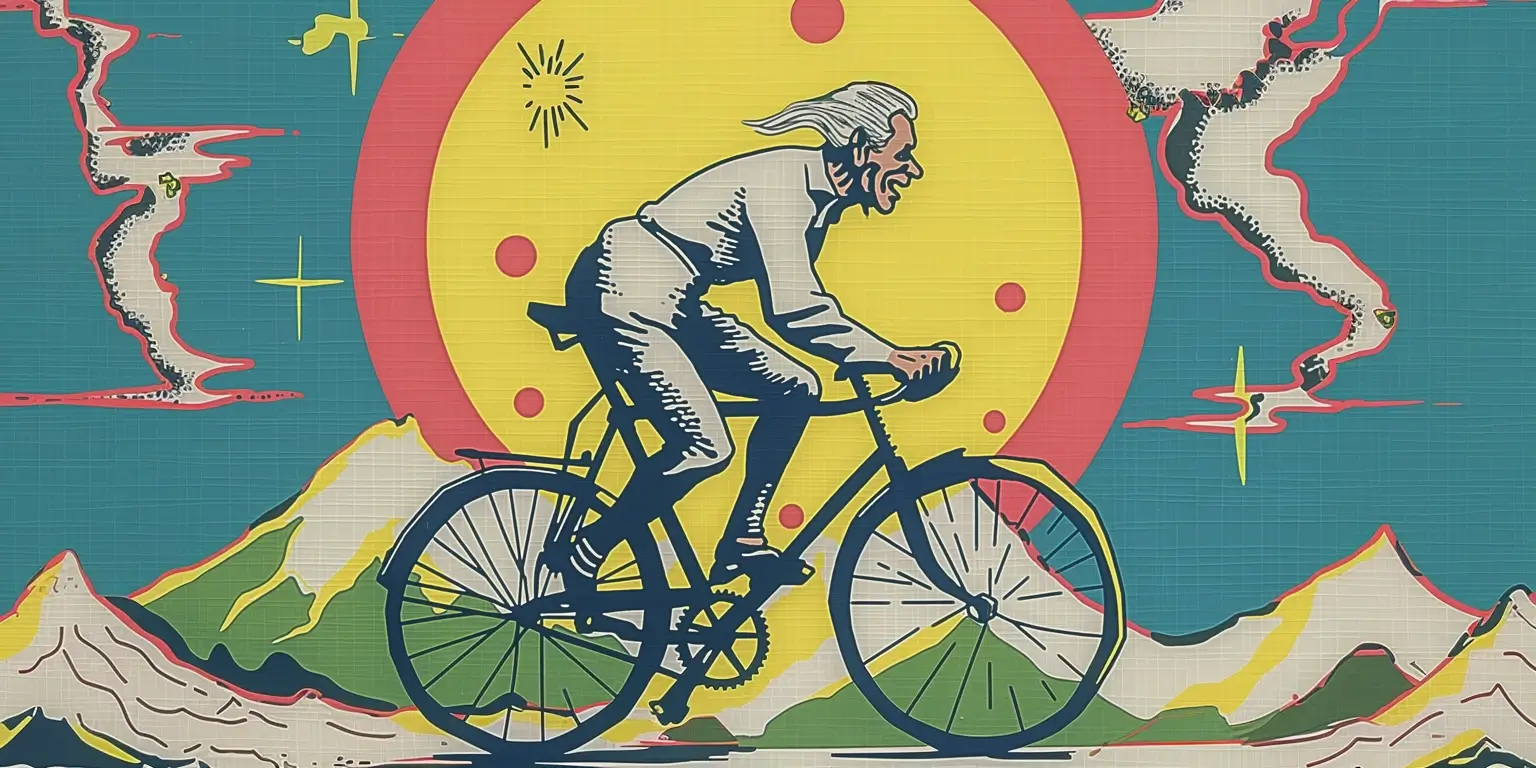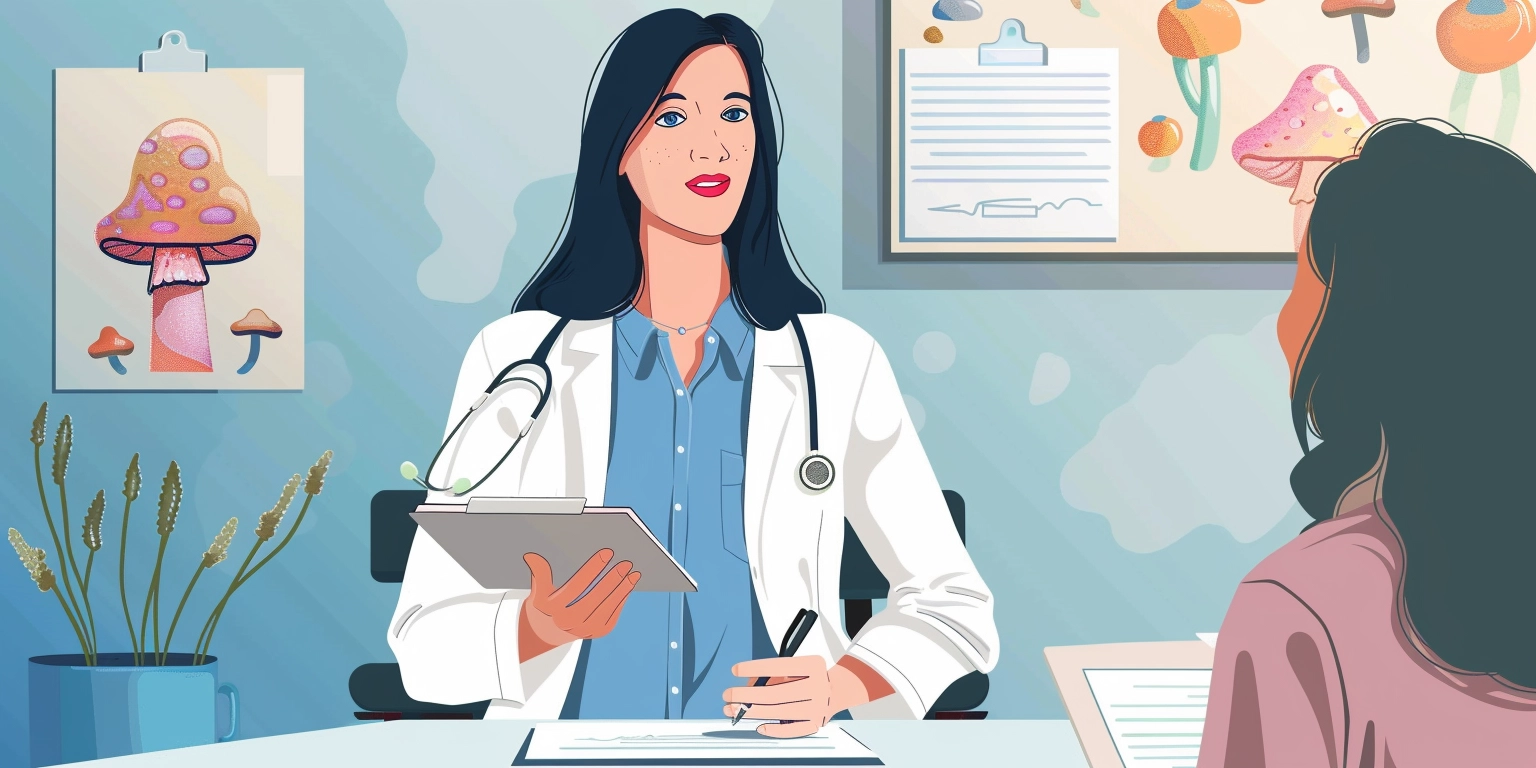Fifteen years ago, psychedelic therapy barely made the news, other than when mentioned as a curious fragment of medical history from the 1960s. Now the mainstream press overflows daily with breathless, effusive headlines as the once-underground psychedelic renaissance makes its way to public consciousness.
Yet, seldom do you see any discussion of the need for further psychological processing for months, years – even a lifetime.
“I’m old enough to know that when somebody says something is magical – it’s not magical,” says Dr. Reg Peters (56 years old), an active hospital physician in British Columbia, Canada, who has campaigned for psychedelic research for decades (after being an emergency and trauma physician for 25 years). He is currently the primary investigator on a Health Canada trial examining the potential use of psilocybin for depression, as well as Medical Consult for Therapsil, a charity that campaigns for compassionate access to psilocybin for end-of-life care.(1)
“Yes, you may find some release of the heart, or shame, or deeply buried traumas – but how do you make it last and truly life changing?” he asks. “You can’t just give people two sessions and then send them away without helping them understand, ‘How do I make sense of this?’”
This may be due in part to the fact that, in many ways, we are still learning how these substances work. Western medicine was introduced to psilocybin and other psychedelics decades ago, but that was quickly followed by years of burdensome prohibition and government interference.
“When it comes down to it, in the West, we are significantly under-informed compared to other cultures that have continuously used these drugs for thousands of years. You have to remember, we’re coming out of a 60-year backlash and only just starting to understand how to use them,” Dr. Peters says. “Here’s an example of a dangerous gap in understanding: people say it’s ten years of therapy in a day. Maybe, fine. But it’s not ten years of integration in a day – and integration work can last an entire lifetime.”
Prioritizing the work of translating the psychedelic experience into actionable change in our daily lives has been challenged, but progress is being made with people like Dr. Rosalind Watts. Dr. Watts had previously been the head clinical psychologist on the world-famous studies conducted at Imperial College London, which compared psilocybin to escitalopram (a commonly used SSRI) in the treatment of depression. So groundbreaking was the study, it was published in the New England Journal of Medicine – as prestigious as it gets.(2)
As significant as the work at Imperial College was, Dr. Watts felt something was sorely missing: post-trial psychological support. “This was always the main thing that I wanted to provide more of in our trials, but was unable to because a clinical trial run by a research organization is set up to test a substance – it’s not designed for therapy or long-term care,” she says.
In other words: A psychedelic session isn’t the therapy itself – it’s the start of the therapy.

This brings us back to Dr. Peters, who says there is a dire need in the entire psychedelic industry – in the underground scene, the trendy retreats, the clinical trials, and the wave of start-ups – for more emphasis on integration. The focus needs to be on putting in work – sometimes very serious work – to make sense of what you experienced in your visions. Then actually incorporating those insights into your daily, sober life.
If you spend a fortune going to Burning Man or the Amazon for some mystical experience you felt would change your life – but then go right back to your job tweaking algorithms for Facebook to harvest our data (a job you probably hate anyways), what was the point? More importantly, and much more seriously, anyone who has relapsed into the depths of depression, addiction, or suicidality after what they thought would be an enormous breakthrough will tell you: you can feel even worse than before.
Some of the existing clinics and retreats in the psychedelics industry will offer integration therapy – usually in the form of an app, or an occasional Zoom call – but deeper work is often necessary. Universities do very little follow-up with care with patients for the simple reason that the trial has ended.
“We’d love to be able to continue working with participants through the full integration process,” says Rafaelle Lancelotta, a licensed professional counselor with years of experience and maintaining a small private practice via relationshipispsychedelic.com. “But until those funds and resources are available, the best we can hope for is that people have already been in therapy for more than two months at the time they sign up.”
Lancelotta is currently working as a Ph.D. student and serving as a research assistant at the Center for Psychedelic Drug Research and Education at the Ohio State University, College of Social Work. She is part of a team led by Dr. Alan K. Davis and Dr. Stacey Armstrong running a trial administering psilocybin to Veterans suffering from PTSD.
“We are not requiring people who agree to participate in the study to stop working with a therapist they are already working with, but we won’t be able to include people who started psychotherapy within the two months before they started the study,” she says. “In addition, we will be providing some therapy sessions to participants after their psilocybin sessions to help with integration.”
This is a huge start – and so much more could be done with proper funding. However, one problem is that a lot of people are reluctant to talk to mainstream psychotherapists after a challenging psychedelic experience.
“Many people fear that if they go to their therapist and tell them about a psychedelic drug experience, their counselor will just think they’re some crazy drug addict,” comments Lancelotta. “But that’s not usually the case – the whole point of talking therapy is that they are not there to pass judgment on you; they are there to listen and to help you arrive at your own truth.”
This fear may bring some to the underground, however.
Integration in the Psychedelic Underground
“Marts” (not her real name) is a qualified trauma counselor who has worked with psychedelics for over thirty years in London – and she’s got concerns with what she’s seen in the explosion of ayahuasca retreats, which “Marts” (who is 50) believes are often run by what she calls under-trained “trustafarian bongo wankers.”
“I am astounded by the lack of care in this profession,” she says. “I see this pattern repeated so often: No follow-up phone calls, no emails. I constantly have to clean up people who have been traumatized by the visions they had – and were given no aftercare. You can’t just open the door to the other world, let people poke their heads into it, and send them back to their office cubicle and tell them to get on with their life. It’s cruel. They are breaking people, and they don’t even stay in touch even with one text message.”
“Marts” fears that the potential end result could be a “revolving door of trauma” for some. Which is why she focuses on integration first and foremost in her own practice. She invites clients back every three months to “go deeper.” Adding, “Psychedelics are not a band-aid – you have to do the work yourself.”

This isn’t always easy, as there are many ways to define “integration.” For “Marts,” it means “looking at the darkest parts of yourself, and then building yourself up from that. Nobody is going to save you. This is about you saving yourself. And if I have to stay up until three in the morning with somebody – I will,” she says.
But she is one of thousands of underground therapists – and the field has no uniformity. Far from it. So what is the answer? “We need to be regulated as an industry,” she says.
How ACER Sprouted From the Seeds of Imperial College London
Imperial College London, Dr. Watts’ old stomping grounds, has spearheaded several of the most instrumental psychedelic studies in recent years. Yet, the nature of the work means that long-term integration isn’t necessarily part of the standard protocol.
A desire to fill this need has led Dr. Watts to create what is the first start-up in the world dedicated solely to psychedelic integration, ACER: Accept, Connect, Embody, and Restore. ACER is based on a concept she first laid out in a 2020 paper in the Journal of Contextual Behavioral Science. (Dr. Watts previously worked in collaboration with Synthesis Institute, which is now defunct, but ACER is not affiliated with that organization.)(3)
Dr. Watts’ psychedelic integration model has great potential for creative experimentation. “In ACER, we use the metaphors of nature so we can write our own story in line with the principles of nature that make us feel safe and held,” says Dr. Watts. “It’s an imaginative process.”(4)
The ACER curriculum of meditations, music, rituals, videos, and journeys is structured over twelve months, with each month centered on one specific inspiration: a tree. January is devoted to the Silver Birch. February, the Rowan, or Mountain Ash. March, the Redwood. And so on.(5)
“Trees teach us how to connect, to embody, to restore. The roots of the tree take us to the places that we don’t always see, don’t always want to go. [We] don’t always want to see what is underneath or what is hidden, where our roots have had to grow around all the rocks, all the difficult places,” says Dr. Watts.
“But the difficulties for the roots becomes the growth of the branches – and that’s where alchemy and transmutation take place. Mud is transformed into sap. Consider that trees have the ability to lose all of their leaves – yet new buds are already there, ready to come into leaf when the time is right. Trees have so many protections against winter, against injuries, against challenges. Consider that trees constantly turn mud – the messy crap beneath our feet – into sap, the elixir of life.”
Take this a step further, I pointed out to Dr. Watts, and that sap becomes amber: a precious jewel.
“Exactly. We call this psychological photosynthesis. How can we all, on a daily basis, continue to say yes to the mud, let it come through our bodies, allow ourselves to let it flow through us – and distill meaning from it?”

And every tree has its own lesson to impart. Silver birches shed their bark annually, letting go of the past. Redwoods still contain the tiny sapling at their heart, no matter how huge. Elder trees – the warrior trees – grow in wet soils by riverbanks, and while other trees are damaged by floods, Elders are galvanized by them. Which tree would you rather be? The one washed away by the flood (metaphorically speaking), or the wise old tree with its roots dug in so deep that nothing can budge it. This is ACER’s goal. To teach you how to dig your roots into the heart of the psychedelic experience, and to anchor yourself in the storm it can sometimes bring on.
Every month, participants consider the virtues of one tree and, through group discussions, meditations, and journaling, can derive insights into their own minds. There’s much more to it than this, but that’s the concept in a nutshell.(6)
Though the ACER program can be used to integrate any kind of experience – psychedelic or sober – Dr. Watts’ original intent was to help people make sense of the visions they have on psychedelic trips. These experiences can be both profound and meaningful, as well as destabilizing and confusing without the proper support.
A patient who had taken part in the Imperial trials and is now working with ACER as a facilitator related some of their experience. The following is the story of how the tree metaphors helped them make sense of an otherworldly vision and relate it to their daily life.
“One of the strongest visions I had on a psychedelic journey was the experience of being my spirit self, traveling through space and time. I became a star, staring out at the vastness of space in front of me with a watchful and protective gaze. Then my spirit whizzed back to earth, to form a tree. I became a tree, and realized in my vision that I was the Sycamore tree – peering down at the world below, standing tall with my arms, now formed as branches, outstretched in front of me,” she says.
“As a tree, I felt a strong sense of strength, self-worth, sturdiness, wisdom, belonging, and connection. This was an important vision for me because I have struggled with a sense of self-worth and belonging. This [struggle] is my mud. I have never looked at trees in the same way. As the afterglow of the psychedelic experiences faded, the memory of that ‘tree’ experience began to dissolve, and it became harder and harder to access the great learnings and feelings associated with that vision,” she notes.
“Proper integration was an open door to reconnect with [the wisdom of the tree] and that sense of self-worth and belonging. Not to mention reforging that connection to nature, which is so important because nature connectedness promotes emotional expansion in the face of the contractive states of depression and anxiety. Working with the theme of trees reminds us to be more ‘tree’ at times: to slow down, to stand tall, to accept that our branches will at times be bare, but this is ok. I can let go and feel a sense that new beginnings will flourish again. Ultimately, this promotes a sense of acceptance, belonging, and a strong sense of self-worth. This [feeling] is my sap. It cycles back to the psychedelic vision,” she concludes.
Dr. Watts’ program is arguably the first devoted to long-term integration. But what might be even more refreshing to some is that ACER is entirely grounded in the history, ecology, and traditions of the UK, where it is located.
Whether ACER succeeds, one thing is clear, if the psychedelic industry fails to wake up to the crucial needs of long-term care, the potential outcome could be disastrous: relapses, disgruntled customers, potentially traumatized clients – and, at worst, a repeat of the 1971 shutdown, which none of us wish to see. It’s also a shame to consider the potential missed opportunity of countless breakthroughs unrealized and the positive outcomes that would unnecessarily dematerialize without proper integration.
For their part, ACER intends to offer free placements of integration therapy for 12 months to participants from clinical drug trials who cannot be given aftercare support by the startups or the universities. Details are yet to be finalized, but Dr. Watts aims to have drug developers themselves pay for 12 months of integration therapy for trial participants. Which, frankly, makes nothing but ethical sense. Given the greater awareness of the issue’s importance and the passion for it in younger researchers, we can only expect to see more in the future.
This material is not intended as a replacement or substitute for any legal or medical advice. Always consult a medical professional about your health needs. Psychedelics are widely illegal in the United States, and readers should always be informed about local, state, and federal regulations regarding psychedelics or other drugs.
- TheraPsil. (2023, February 8). Our Team. https://therapsil.ca/our-team/
- Carhart-Harris, R., Giribaldi, B., Watts, R., Baker-Jones, M., Murphy-Beiner, A., Murphy, R., Martell, J., Blemings, A., Erritzoe, D., & Nutt, D. J. (2021, April 15). Trial of Psilocybin versus Escitalopram for Depression. The New England Journal of Medicine. Retrieved February 2023. https://www.nejm.org/doi/full/10.1056/nejmoa2032994
- Cormier, Z. (2021, April 15). Psilocybin Therapy May Work as Well as Common Antidepressant. Scientific American. https://www.scientificamerican.com/article/psilocybin-therapy-may-work-as-well-as-common-antidepressant/
- ACER Integration. (n.d.). ACER Integration. https://acerintegration.com/
- Watts, R., & Luoma, J. B. (2020). The use of the psychological flexibility model to support psychedelic-assisted therapy. Journal of Contextual Behavioral Science, 15, 92–102. https://doi.org/10.1016/j.jcbs.2019.12.004
- JWatts, R., Kettner, H., Geerts, D., Gandy, S., Kartner, L., Mertens, L., Timmermann, C., Nour, M. M., Kaelen, M., Nutt, D., Carhart-Harris, R., & Roseman, L. (2022). The Watts Connectedness Scale: a new scale for measuring a sense of connectedness to self, others, and world. Psychopharmacology. https://doi.org/10.1007/s00213-022-06187-5
 Zoe Cormier
Zoe Cormier


